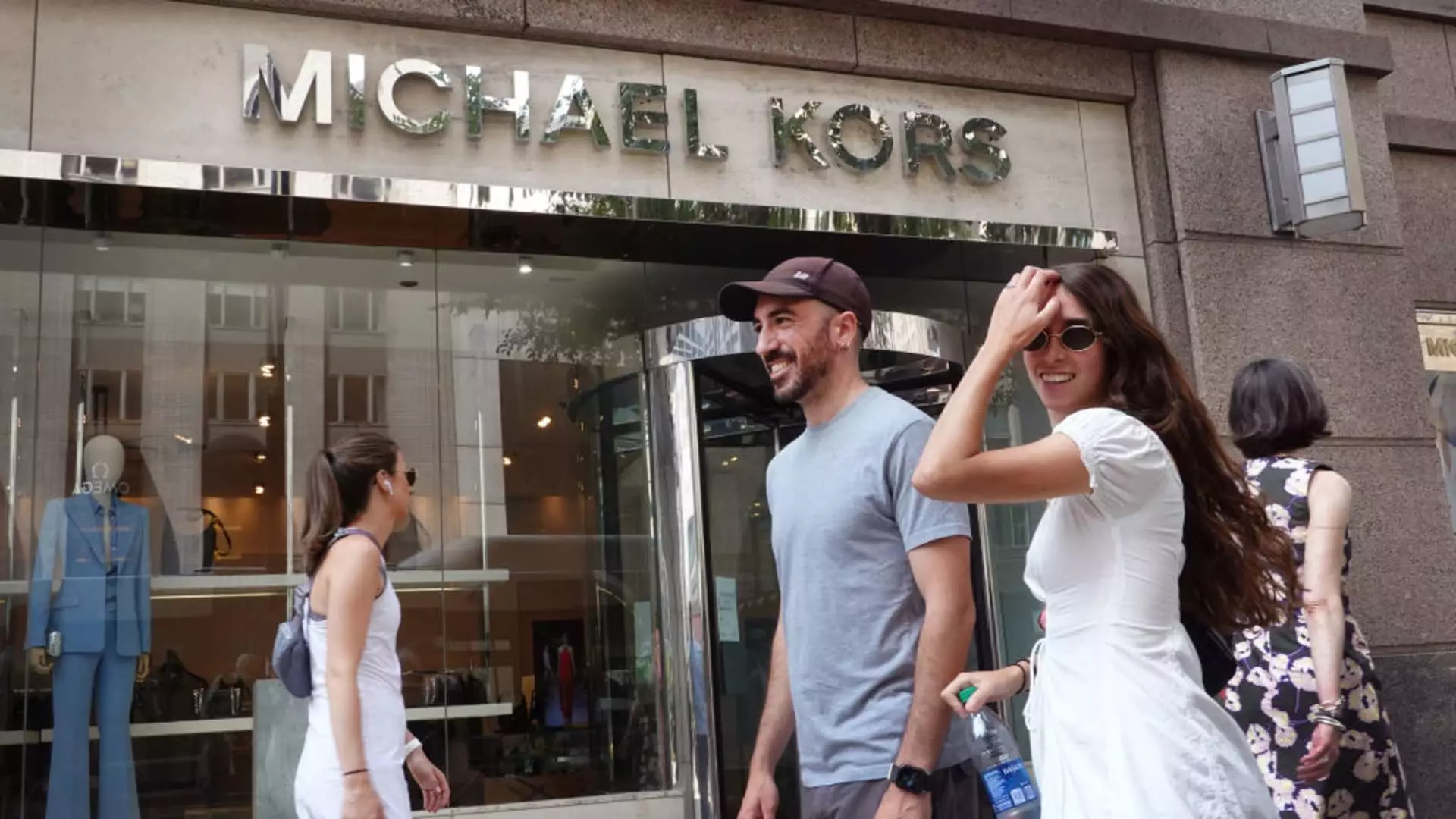On Thursday, luxury fashion conglomerates Capri Holdings and Tapestry Inc. called off their much-anticipated merger, a $8.5 billion deal that was meant to unite some of the leading names in the high-end fashion industry under one corporate umbrella. The decision to terminate the merger came after the Federal Trade Commission (FTC) successfully intervened, citing concerns that the merger would adversely affect competition and consumer welfare. Given that regulatory approval was unlikely before the merger agreement’s expiration in February, both companies mutually agreed to walk away, focusing their attention on their respective futures.
Capri’s CEO, John Idol, expressed a confident outlook post-termination, proclaiming a focus on the growth potential of his company’s luxury brands: Versace, Jimmy Choo, and Michael Kors. This scenario paints a complex picture of both companies navigating a challenging market landscape and regulatory issues, while also re-evaluating their growth strategies.
Regulatory Hurdles and Market Reactions
The FTC’s lawsuit to block the merger was not entirely unexpected. Concerns surrounding monopolistic practices within the luxury goods sector have been amplified in recent years, illustrating a growing trend of regulatory scrutiny over mergers that could consolidate market power. The court’s ruling in favor of the FTC underscored the increasing wariness of regulators toward large-scale consolidation, especially in sectors dominated by few key players.
In the aftermath, the stock performances of both brands offered stark contrasts. Capri Holdings saw a significant drop in its stock price — plummeting nearly 50% — while Tapestry’s shares surged by approximately 10%. Such volatility illustrates the market’s stark interpretation of the merger’s potential value relative to the risks involved, particularly the decline in Capri’s performance prior to the merger announcement. Analysts had expressed skepticism about the deal, citing perceptions that Tapestry might be overextending itself and buying a company in decline.
With the merger behind them, both companies now face the pivotal task of re-strategizing to navigate the ever-evolving luxury market landscape. Tapestry plans to leverage the funds that were earmarked for the merger, redirecting a portion of its cash flow into a stock repurchase program amounting to $2 billion. CEO Joanne Crevoiserat emphasized the importance of remaining agile and committed to organic growth avenues. By reinvesting in existing brands and enhancing their market positions, Tapestry aims to ignite its growth trajectory independent of acquisitions.
Conversely, Capri’s path is fraught with challenges. The need to revitalize its flagship brand, Michael Kors, has never been more pressing. Idol acknowledged the decline the brand has experienced over the last 18 months and expressed intent to implement new strategic initiatives. The focus will pivot onto improving brand desirability through innovative marketing, dynamic product offerings, and a seamless omni-channel consumer experience. These are critical moves aiming to reinvigorate consumer interest and stimulate sales, particularly for Michael Kors, which has historically served as a cornerstone for Capri’s portfolio.
As the luxury market braces itself for ongoing transitions, the fallout from the Capri-Tapestry merger will likely resonate throughout the industry. The obstacles faced by both companies illuminate broader concerns around competition, pricing, and consumer access in luxury fashion. In an environment where brand heritage and consumer connection matter more than sheer size, there is clarity in the strategic pivots that both firms must adopt.
For Tapestry, the emphasis on organic growth presents an opportunity to solidify its existing brand strengths and further differentiate in a crowded market. As for Capri, the reinvention of its crucial brands, particularly Michael Kors, will be critical in defining its comeback narrative. If handled adeptly, these paths could lead both companies to newfound heights, albeit amid an environment that remains unpredictable and fraught with challenges.
The failure of the merger signals a need for reflection and strategic recalibration within the luxury segment. Both companies now have the chance to craft resurgence stories grounded in authenticity and revitalized engagement rather than dependency on consolidation—a more organic approach that might indeed serve them better in the long run.

